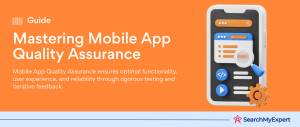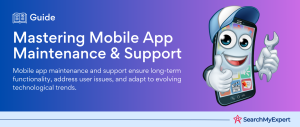Messaging applications are no longer a luxury; they’re a necessity. As we become increasingly interconnected in this digital age, the need for efficient, reliable, and engaging messaging platforms grows. If you aim to build the next game-changing messaging application, you’re in the right place. Dive deep into our thorough guide that covers every aspect of messaging app development.
Understanding the Messaging App Landscape
Global statistics indicate a soaring trend in the adoption of messaging apps. Currently, there are over 3 billion messaging app users worldwide. A report from 2019 estimated the market value of chat software at a whopping $47.92 billion. This figure is expected to skyrocket to $82.36 billion by 2027, with an impressive CAGR of 7.02%. Evidently, the future looks bright for messaging apps.
WhatsApp and Messenger lead the global market, with WhatsApp dominating the user base. However, competition is fierce, and innovation is key to making a mark in this bustling space.
Essential Features of Messaging Apps
While every app might have its unique selling point, certain foundational features are non-negotiable. Here’s a breakdown:
1. Seamless Authorization
To ensure security without compromising user experience, an efficient authorization mechanism is paramount. Incorporate multiple methods such as:
- Social Media Logins: For a quick and hassle-free sign-up process.
- Email-based Sign Up: Granting users complete control over their credentials.
2. Real-time Messaging
Every detail matters in the core functionality:
- Secret Chats: Enhance privacy with self-destructing messages.
- Delivery Status: Essential for tracking message delivery and read status.
- Undo Sent Messages: A lifesaver when users have second thoughts.
- Group Chats: Facilitating community conversations.
- Scheduled Messages: Pre-set messages for timely delivery.
- Moderation Tools: For better management of group dynamics.
3. Simplified Contact Importing
Automate contact syncing from the user’s device. Additionally, highlight contacts already using the app to kickstart their engagement.
4. Voice and Video Integration
Beyond text:
- Voice & Video Messages: For when words fall short.
- Voice & Video Calls: A staple in modern messaging apps.
5. Multimedia Sharing
Enabling users to share documents, photos, videos, and other files directly within chats ensures your app remains their preferred platform for all communications.
Distinguishing Features for a Competitive Edge
To stand out in a crowded market, consider these advanced features:
1. Personalized Stickers
Let users express themselves better with custom sticker packs.
2. Intelligent Chatbots
24/7 support or shopping bots can elevate user experience, ensuring your app becomes an indispensable part of their daily life.
3. Integrated Mini-Games
Retain user engagement with fun, in-app games.
4. Streaming and Stories
Capitalize on the trend of ephemeral content. Allow users to share their moments, lasting for a day.
5. Advanced AI Integration
Empower your app with AI-driven features like speech-to-text, chat suggestions, and more using APIs from tech leaders like Google Cloud and IBM.
Behind the Scenes: Crafting the Tech Blueprint
An app’s success isn’t just determined by its front-end features but also its robust backend.
1. Decoding App Architecture
- API: The heart of real-time messaging, facilitating communication between the server and client.
- Media Service: Essential for multimedia sharing.
- Database & Storage Solutions: Ensuring data integrity and fast retrieval.
- Notification Services: Keeping users engaged with timely updates.
2. Ensuring Smooth Message Flow
It’s imperative to understand and optimize how messages are routed, especially in group chats. Employ solutions tailored for mobile clients, factoring in connection instabilities.
3. Adopting the Right Architectural Pattern
Considering the unique requirements of messaging apps, the Event Sourcing architectural pattern is highly recommended.
4. Building a Robust Back-end
An app’s back-end is its backbone. Opt for reliable server-side software architecture. Ensure it’s scalable to handle growing user numbers and data volumes.

The above diagram represents a simple message flow between two users via a server.
The Evolution of Messaging Apps
From the humble beginnings of text messages (SMS) to today’s multifaceted platforms, messaging apps have seen an unparalleled evolution. This metamorphosis is driven by both technological advancements and user demands.
Cross-Platform Compatibility
For any messaging app to be universally accepted, it should work seamlessly across different operating systems and devices, be it Android, iOS, desktop, or web. Cross-platform apps ensure a larger user base and better connectivity.
Privacy and Security
In the wake of various data breaches, users are more concerned than ever about their digital privacy.
- End-to-End Encryption: Makes sure only the communicating users can read the messages.
- Two-Factor Authentication (2FA): An additional layer of security to prevent unauthorized access.
- Self-destructing Messages: Allows users to send messages that vanish after a set period, ensuring sensitive data isn’t left behind.
Integration with Other Services
Allow users to streamline their tasks by integrating other services into the messaging platform:
- Payment Gateways: Enables direct payments or money transfers.
- Calendar and Scheduling: Lets users plan events or set reminders.
- Third-party App Integration: Incorporate functionalities of other popular apps.
Personalized User Experience
Customization can be the key to retaining users. Provide them with options to:
- Change Themes: Let users select from a range of app themes or even create their own.
- Custom Notifications: Allow users to set specific ringtones or notification sounds for individual contacts.
- Language and Translation Tools: With AI, instantly translate messages for users speaking different languages.
Enhanced Search and Archive Features
Over time, users will accumulate thousands of messages. Implementing a powerful search functionality can help users retrieve past messages, images, or links easily. Additionally, provide an archive option to declutter without permanently deleting chats.
Interactive Platforms and Augmented Reality (AR)
The future of messaging lies in more interactive mediums:
- AR Chats: Imagine chatting with a friend’s 3D avatar right in your room.
- Virtual Reality (VR) Meetings: Step up from video calls to VR-based meetings for a more immersive experience.
Navigating the Challenges in Messaging App Development
While the opportunities in the realm of messaging apps are vast, it is essential to be cognizant of the challenges that come along. Understanding these challenges can provide a roadmap for better decision-making during the development process.
1. Scalability Issues
As your user base grows, so does the demand on your infrastructure.
- Dynamic Load Balancing: This ensures even distribution of workloads across servers, preventing any single server from becoming a bottleneck.
- Distributed Databases: Implementing solutions like sharding can distribute your data across multiple servers, ensuring quick data retrieval even under heavy loads.
2. Data Redundancy and Recovery
Loss of messages or user data can erode trust.
- Regular Backups: Scheduled and regular backups can help recover data in case of unexpected failures.
- Data Replication: Maintain copies of data across different servers or even geographical locations to safeguard against data loss due to localised issues.
3. Real-time Performance
A delay in message delivery can be a dealbreaker for many users.
- Optimized Server Response Times: Ensure your servers are optimized to handle requests in real time.
- Use of Content Delivery Networks (CDNs): These can reduce latency by caching content in multiple locations around the world.
4. Ensuring Data Security
Beyond encryption, it’s essential to be proactive in ensuring user data is secure.
- Regular Security Audits: Conduct periodic checks to identify and rectify potential vulnerabilities.
- Protection against DDoS attacks: Use firewalls, traffic filtering, and other mechanisms to guard against malicious attacks aimed at disrupting service.
5. User Retention Strategies
Attracting users is only half the battle; retaining them is equally crucial.
- Engagement Features: Implement features like daily challenges, streaks, or rewards to keep users engaged.
- Regular Updates: Continuously roll out new features, enhancements, and optimizations based on user feedback.
6. Regulatory Hurdles
Depending on the geographies you operate in, there might be various regulations governing data storage, privacy, and communication.
- GDPR Compliance: For operating in European regions, it’s essential to be GDPR compliant, safeguarding user data and privacy.
- Local Regulations: Each country might have specific laws, and it’s imperative to be aware of and comply with these.
The Future: Beyond Conventional Messaging
The next wave of innovation in messaging is poised to move beyond text, voice, and video.
Integration with IoT
Messaging apps can become the interface for users to communicate with their smart devices, be it home automation systems, wearables, or even vehicles.
Enhanced AR and VR Communication
Beyond AR avatars, imagine a future where users can have virtual meet-ups in 3D environments, making digital communication feel as real as physical meetings.
AI-Powered Predictive Messaging
With advancements in AI, messaging apps can predict user responses, automate routine communications, and provide smart suggestions, making conversations smoother and faster.
Sustainability and Carbon Neutral Operations
In an environmentally-conscious world, ensuring that your app’s operations are sustainable and, if possible, carbon-neutral can be a significant selling point.
Monetizing Your Messaging App
With a vast user base, there are multiple avenues to generate revenue:
- Premium Models: Offer a free basic version and a paid premium version with advanced features.
- Ads and Sponsored Content: Display targeted ads or promote sponsored content.
- Sticker and Theme Market: Let users purchase custom stickers, themes, or emojis.
Feedback and Continuous Improvement
Finally, no app can sustain success without continuously evolving. Regularly solicit feedback from your users and make iterative improvements. Monitor app performance, user behavior, and market trends. A proactive approach will ensure your messaging app remains ahead of the curve.
Conclusion
Embarking on the journey of creating a messaging app in today’s digital age is both exciting and challenging. By anticipating challenges, staying ahead of technological advancements, and continuously placing users at the forefront of decision-making, developers can create platforms that not only meet but exceed user expectations. The future of messaging is vast and filled with potential; it’s up to innovators to shape it.
Soar to New Heights with the best Mobile App Development Companies
in the business.
Further Reading
- AR VR App Development
- Integrating Payment Gateways In Mobile Apps
- Geolocation App Development
- In-App Purchases
- Push Notifications
- User Authentication
- Social Media Integration App Development
- Multilingual Mobile App Creation
- Offline Mobile App Development
Table of Contents
Toggle






